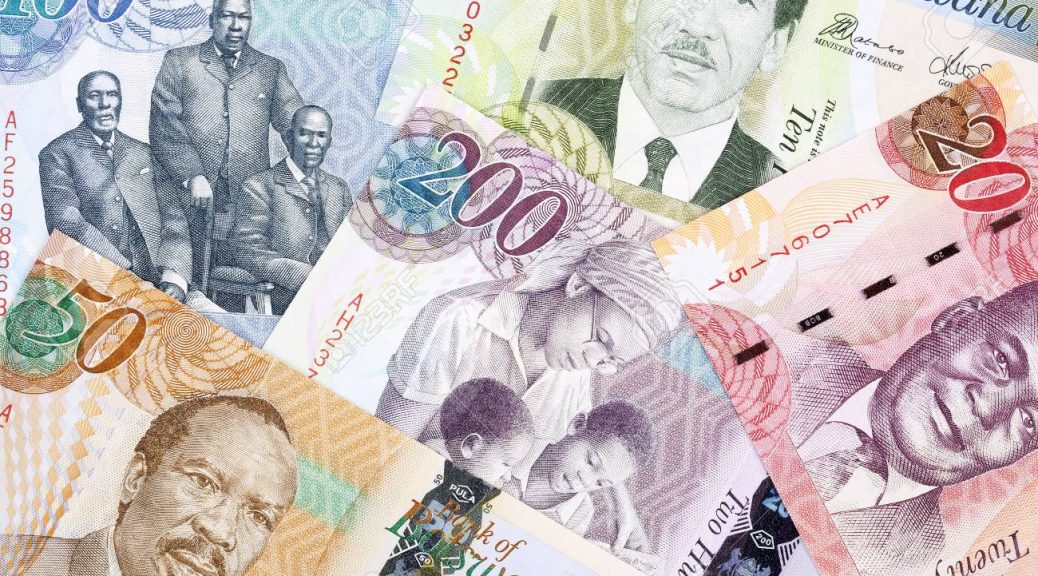Botswana - Market Overview
Botswana offers a stable political, fiscal, and macroeconomic environment. Botswana’s GDP per capita of $7,595 (Pula 82,110) according to World Bank 2017 data, makes it an Upper Middle-Income Country according to World Bank standards. GDP for 2017 was measured at approximately $17.48 billion (P189 billion) by the World Bank. The Bank of Botswana reports 2018 GDP was $18.35 billion (P198 billion).
Botswana has historically enjoyed one of the highest economic growth rates in the world. Botswana has a small population of 2.2 million; however, it has the potential to leverage its position in the region to serve as a gateway to the southern African market.
Botswana’s export-driven economy is highly correlated with global economic trends. During the global financial crisis, Botswana’s economy went into recession, posting a negative GDP growth rate of 4.9% in 2009. The country recovered, with 9.3% real GDP growth in 2013 and 3.9% in 2014. The Government of Botswana (GOB) reports the economy grew by 2.9% in 2017, and increased to 4.5% in 2018. The recovery was mainly due to the improved output in the mining sector particularly the diamond sector.
Botswana maintains a conservative fiscal policy and low levels of foreign debt. For the last three years inflation has remained at the bottom end of the central bank’s 3 – 6% target range. According to the Bank of Botswana inflation in Botswana stood at 3.4% in April 2018 and 2.5% in April 2019. The Bank of Botswana projects inflation to remain within its target range during 2019. Moody’s and S&P rate Botswana’s sovereign debt as A2 and A-, respectively. Inflation in Botswana is affected by fuel prices, which the government subsidizes via a National Petroleum Fund fuel tax.
For its currency, the Botswana Pula, the GOB maintains a basket of weights of 45% South African Rand and 55% IMF’s Special Drawing Rights (SDR is a basket of currencies comprised of the U.S. Dollar, British Pound, Euro, the Japanese Yen and the Chinese Renminbi). The central bank implemented an downward rate of crawl of as of 1st of January 2018 for the nominal exchange rate which resulted in a 0.3% depreciation for the year.
Botswana’s trade balance is largely tied to the global demand for diamonds, which represent approximately 80% of the country’s export revenues. Customs revenue from the Southern African Customs Union (SACU) and diamond revenue each contribute about one-third of total GOB revenue. As a result, two-thirds of the GOB’s income is largely outside of the GOB’s control, placing pressure on policy makers to plan conservatively.
Despite Botswana’s upper middle-income status, it has one of the highest rates of income inequality in the world and suffers high rates of poverty and unemployment.
Government spending has traditionally played a large role in Botswana’s economy. GOB expenditures account for one-third of GDP. The government employs about 40% of workers and employees of quasi-public “parastatal” firms (SOEs) make up another 5%.
The GOB has invested revenues into a historically solid infrastructure, including roads, telecommunication systems, hospitals, hotels, and schools. However, poor planning and workmanship have caused several infrastructure problems, particularly in the power and water sectors. The GoB is currently working on improving the power and water sectors, by drilling more boreholes (Masama wells), building new pipelines and soliciting solar power projects with a 100MW tender in pipeline.
The manufacturing sector is small, accounting for about 5.2% of GDP according to the GOB. Agriculture accounted for only about 2.0% of GDP in 2017. Finance and business services represented about 14.2% of GDP. The GOB estimates Trade, Hotels and Restaurants accounted for about 19.6% of GDP (outside business analysts estimate tourism to be 4 – 7% of GDP)
U.S. Government trade statistics show total U.S. exports to Botswana of $93 million in 2017, up 120% from 2016 and up 73% from 2007. Exports consisted of low value shipments ($40 million), railway vehicles/equipment ($29 million), aircraft ($8 million), precious metal and stone (diamonds) ($6 million), and machinery ($5 million). As many U.S. products enter Botswana as re-exports from South Africa, the export figure does not represent the total consumption of U.S. goods in the country. Similarly, the U.S. import figure does not include most diamonds, which generally enter the U.S. as re-exports from the United Kingdom and elsewhere.
The major U.S. export opportunities for Botswana continue to be in the area of mining equipment, hospital/medical equipment and supplies, aircraft equipment, pharmaceuticals, telecommunications equipment and services, computer hardware and software, energy equipment, and financial and consulting services.
Botswana is a member of the Southern African Development Community (SADC), a regional intergovernmental organization of fifteen African states. The SADC Trade Protocol provides each member state most favored nation treatment on import and export duties. SADC members have not yet implemented a Free Trade Agreement (FTA) eliminating regional tariffs, although one is in place. Botswana was also the 51st country to sign the African Continental Free Trade Agreement (AfCFTA) in February 2019. FTA negotiations between the United States and the region were suspended in 2006.
Botswana is also a member of SACU, which consists of Botswana, Lesotho, Namibia, eSwatini, and South Africa. Customs and excise duties in SACU are pooled and distributed according to a revenue sharing formula. South Africa pays the most and has grown frustrated with its role subsidizing the smaller economies. Should member states revise the revenue sharing formula, this source of revenue could decline.
The Botswana Democratic Party (BDP) has ruled the country since independence in 1966. Democratic institutions have had a successful history making Botswana one of the best functioning democracies in all of Africa. The last Parliamentary elections were held successfully in October 2014. In 2018 President Ian Khama finished serving as President for 10 years, the maximum term authorized by the constitution. Khama stepped down in April and Vice President Mokgweetsi Masisi assumed the presidency until the next general election, which is expected in October 2019.
Botswana and the U.S. enjoy good bilateral relations.

